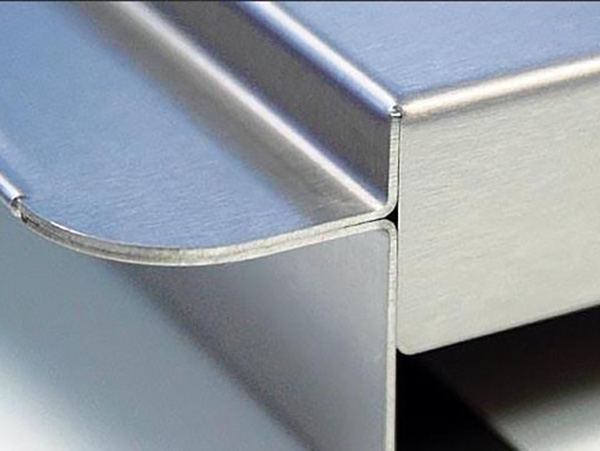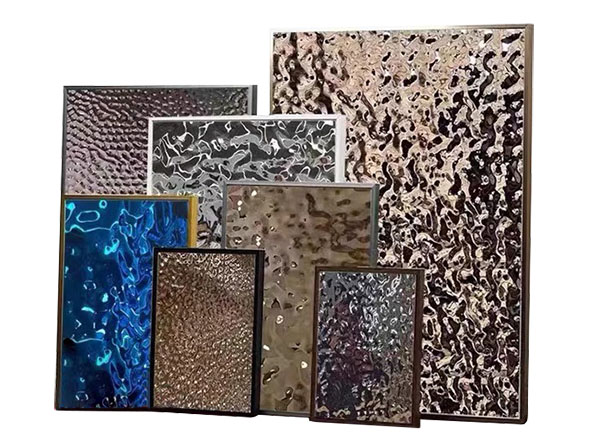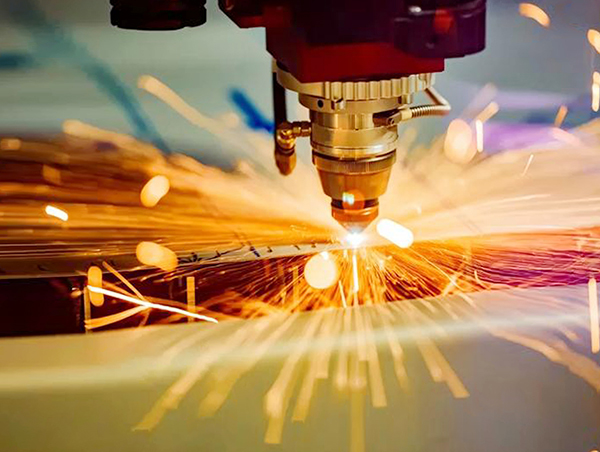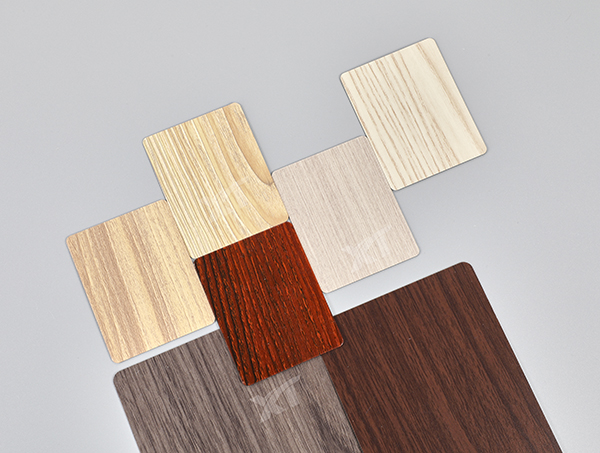
Bending Methods For Stainless Steel
Stainless
steel, being a versatile and durable material, can be bent using several
methods depending on the thickness, grade, and desired outcome. Here are some
common bending methods for stainless steel:
u Cold
Bending:
This method involves bending stainless steel at room temperature. It's suitable
for thin sheets and small parts. Cold bending can be done manually or using
equipment like a press brake, which applies force to bend the metal. However,
it's important to note that stainless steel has higher strength and work
hardening properties compared to other metals, so more force may be required.
u Roll
Bending:
Roll bending involves passing stainless steel through sets of rollers to
gradually bend it into the desired shape. This method is often used for
cylindrical or curved shapes, such as tubes or pipes. It's suitable for both
thin and thick sections of stainless steel.
u Hot
Bending:
Hot bending involves heating the stainless steel to high temperatures (usually
around 1000-1200°C) before bending. Heating reduces the material's strength and
makes it more malleable, allowing for easier bending without risk of cracking.
Hot bending is commonly used for thick sections or complex shapes.
u Induction
Bending:
This method utilizes induction heating to heat specific areas of the stainless
steel before bending. It's suitable for large diameter pipes and tubes.
Induction bending allows for precise control over the bending process and
minimizes distortion.
u Press
Brake Bending: A press brake is a machine tool equipped with a flat bed
and a V-shaped or U-shaped die. The stainless steel sheet is placed on the bed,
and a punch presses down to bend it against the die. Press brake bending is
commonly used for producing straight bends and angles in stainless steel sheets
and plates.
u Air
Bending:
In air bending, the stainless steel sheet is bent by applying force using a
punch, but it doesn't fully contact the die, leaving a small gap. This method
allows for greater flexibility in bending angles and reduces the risk of
damaging the material.
u Coining: Coining
is a precision bending method used to produce sharp bends or intricate shapes
in stainless steel. It involves applying high pressure to the material using a
specially designed die and punch set.
u Rotary
Draw Bending: This method involves clamping one end of a stainless
steel tube or pipe and drawing it around a die while simultaneously bending it.
Rotary draw bending is commonly used for producing tight-radius bends with
minimal distortion.
u Mandrel
Bending:
Mandrel bending utilizes a mandrel (a rod or flexible rod inserted into the
tube or pipe) to support the inner wall of the stainless steel during bending.
This method helps prevent wrinkling or collapsing of the tube or pipe and is
often used for producing smooth bends in stainless steel tubing.
Before performing any bending operation, it's crucial to consider factors such as the grade and thickness of the stainless steel, the desired bend radius, and the tolerances required for the finished product. Additionally, proper safety measures should always be followed to prevent accidents and ensure quality results.

Which Specification Is Suitable For Bending?
The
choice of specification for bending stainless steel depends on several factors,
including the grade of stainless steel, the thickness of the material, the type
of bending method being used, and the specific requirements of the application.
Here are some considerations:
Grade of
Stainless Steel: Different grades of stainless steel have varying mechanical
properties, including hardness, strength, and ductility. Austenitic stainless
steels (such as 304 and 316) are generally more ductile and easier to bend than
martensitic or duplex stainless steels. Therefore, austenitic grades are often
preferred for bending applications.
Thickness
of Material: Thinner sheets and plates are generally easier to bend than
thicker ones. However, even within the same grade, thicker sections may require
specific bending methods or preheating to achieve the desired bend without
cracking or excessive deformation.
Bending
Method: Certain bending methods may be better suited for specific stainless
steel specifications. For example, cold bending can be used for most stainless
steel grades and thicknesses, while hot bending or induction bending may be
necessary for thicker sections or complex shapes.
The
Technical Performance Of Stainless Steel Sheets
1) Because
the thermal conductivity is worse than ordinary low carbon steel and the
elongation is low, the required deformation force is large;
2) 321
stainless steel sheet has a strong rebound tendency compared with carbon steel
when bent;
3) Due to
the lower elongation of stainless steel plates compared to carbon steel, the
bending angle R of the workpiece during bending must be greater than that of
carbon steel, otherwise cracks may occur;
4) Due to
the high hardness of SUS304 stainless steel plate and the significant cold work
hardening effect, when selecting a press bending tool, you must choose a tool
steel with a heat treatment hardness of above 60HRC. Its surface roughness is
an order of magnitude higher than that of carbon steel press bending tools.

How
To Bend Stainless Steel Sheets?
Ø Under
unit size, the thicker the plate, the greater the required bending force, and
as the plate thickness increases, the margin for bending force should be
greater when selecting bending equipment;
Ø Under
unit size, the greater the tensile strength, the smaller the elongation, the
greater the required bending force, and the larger the bending angle should be;
Ø When the
plate thickness corresponds to the bending radius in the design drawing,
according to experience, the expansion size of a bent workpiece is the sum of
the right-angled sides minus the two plate thicknesses, which can fully meet
the design accuracy requirements. The expansion amount can be calculated
according to the empirical formula. Simplifying the calculation process greatly
improves production efficiency;
Ø The
greater the yield strength of the material, the greater the elastic recovery.
In order to obtain a 90-degree angle for the bent part, the angle of the
required press knife must be designed to be smaller. Compared with carbon
steel, stainless steel with the same plate thickness has a larger bending
angle. Special attention should be paid to this point, otherwise bending cracks
will occur and affect the strength of the workpiece.
Ø Because
the thermal conductivity is worse than ordinary low carbon steel and the
elongation is low, the required deformation force is large; 321 stainless steel
sheets have a strong rebound tendency compared with carbon steel when bending;
stainless steel sheets have a strong rebound tendency compared to carbon steel
due to the elongation Low, the bending angle R of the workpiece must be larger
than that of carbon steel during bending, otherwise cracks may occur.
Ø Due to
the high hardness of stainless steel plates and the significant cold work
hardening effect, when selecting press bending tools, you must choose tool
steel with a heat treatment hardness of above 60HRC. Its surface roughness is
an order of magnitude higher than that of carbon steel press bending tools.

How To Bend
Stainless Steel Pipes?
Bending stainless
steel pipes can be achieved using several methods, depending on factors such as
the pipe diameter, wall thickness, bend radius, and desired precision.
There are 2
different bending methods: cold bending and hot bending. Bending at room
temperature is called cold bending and it is often done by a fitter. Heat
bending involves heating the
stainless steel pipe to high temperatures before bending. Heat bending reduces
the material's strength and allows for easier deformation. When the workpiece
is thick (half of it exceeds 5mm), it needs to be bent under heating, which is
called hot bending and is often completed by a forger. This method is suitable
for thicker pipes and complex bends.
There are manual bending and mechanical bending.
Manual Bending: Suitable for small-diameter pipes and simple
bends. This method involves using a pipe bender or bending tool to gradually
bend the pipe to the desired angle.
Mechanical Bending: Utilizes machinery such as a hydraulic or
manual pipe bender. Mechanical bending is suitable for larger diameter pipes
and tighter bends.






